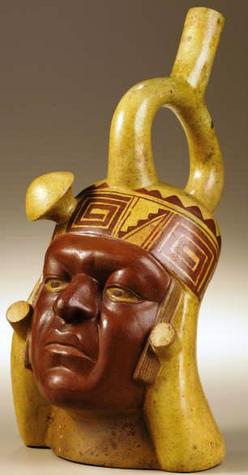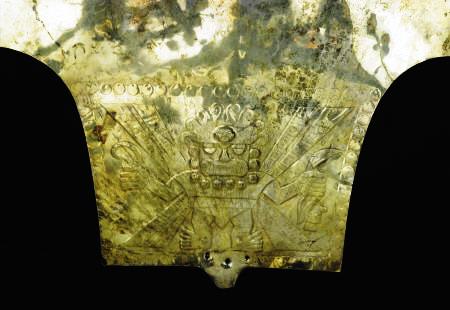Moche Culture
The Moche or Mochica people were a pre-Columbian culture that occupied the northern coast of Peru and the Moche River valley from around 100 B.C. to 800 A.D. Also sometimes referred to as the Early, Pre- or Proto-Chimu, Moche refers to the river they lived near, while Mochica is a Chimuan language (although there is no evidence that it is the language the Moche spoke). The Moche lived at the same time as the Nazca or Nasca people, and the following dominant cultures were the Chimu and Huari.
While we don’t yet understand the organizational nature of their culture, the Moche were known for their skills in building, pottery and metal-working. Adobe brick examples of temples, pyramids and aqueducts survive, as well as numerous pieces of pottery, many with molded figural decoration. They also put a great deal of effort into an irrigation system that diverted water from the Moche River. Numerous archaeological sites remain, including the Huaca del Sol and the Huaca de la Luna.
Moche pottery is amazingly diverse, but it is also evident that they were using molds to create pieces. The pottery of the Moche has relatively simple color decoration, the normal range of red and yellow earthtones with some black and white accents, and the subject matter is varied, depicting figures occupied with the activities of their lives; sex, war, weaving, etc.

A Moche pottery vessel with colorful decoration. (p4A item # D9925253)
Archaeological evidence also suggests that the Moche participated in human sacrifice, and many decorations include a figure historians have dubbed ‘The Decapitator’, a ferocious-looking deity-like figure that is usually shown holding a knife in one hand and a human head in the other.

A detail of the ‘Decapitator’ from a Moche gold emblem. A closer look reveals a curved knife in the hand on the left and a head in the hand on the right.(p4A item # D9924472)
As is the case with many pre-Columbian cultures, little is known of what brought about the demise of the Moche. Some research indicates a difficult environmental period with weather disturbances that would have threatened the Moche way of life, while others believe that conflicts within the culture led to groups drifting apart and resettling in other areas in smaller communities, maybe even becoming part of the later Chimu culture.
